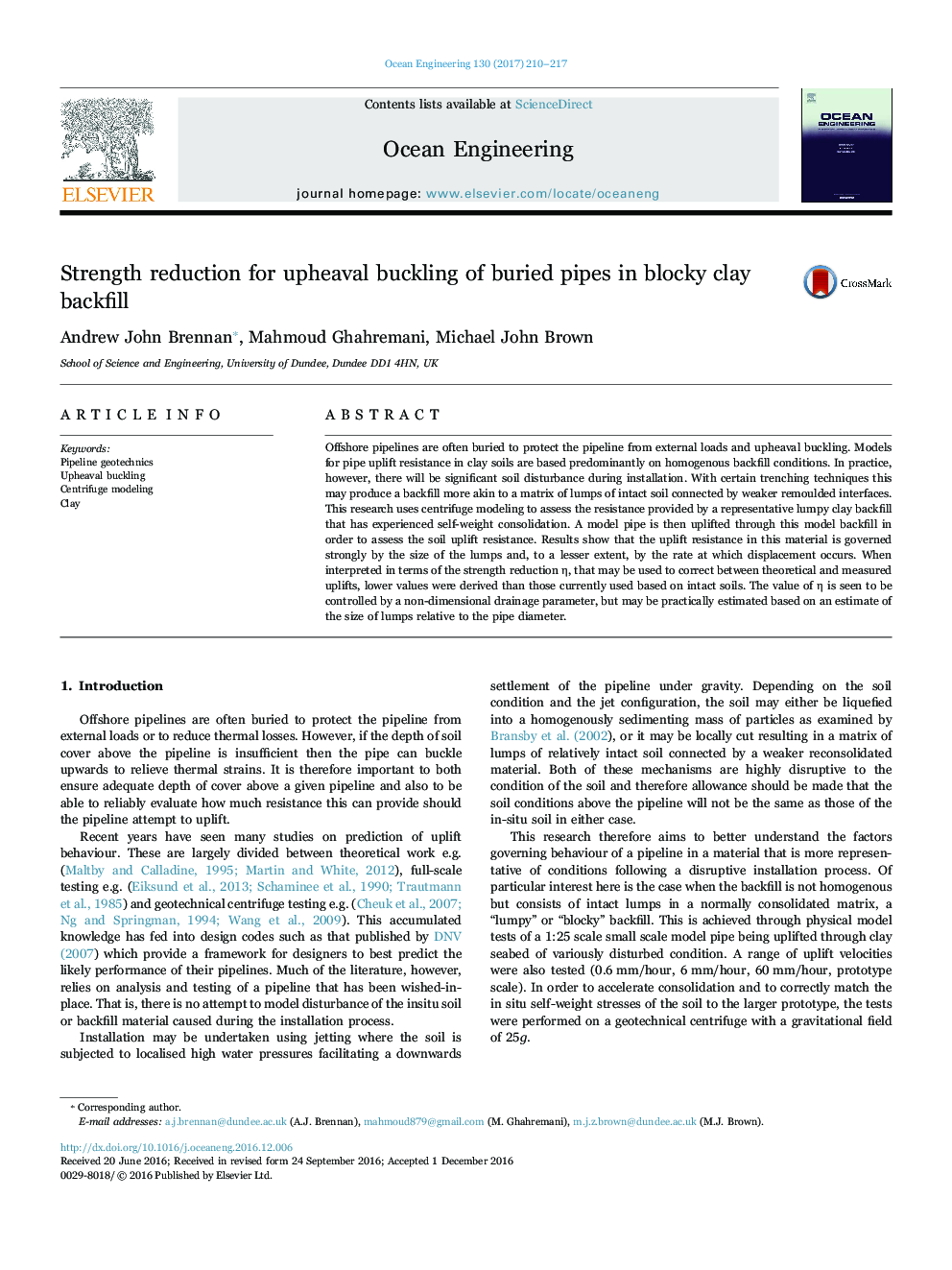| Article ID | Journal | Published Year | Pages | File Type |
|---|---|---|---|---|
| 5474626 | Ocean Engineering | 2017 | 8 Pages |
Abstract
Offshore pipelines are often buried to protect the pipeline from external loads and upheaval buckling. Models for pipe uplift resistance in clay soils are based predominantly on homogenous backfill conditions. In practice, however, there will be significant soil disturbance during installation. With certain trenching techniques this may produce a backfill more akin to a matrix of lumps of intact soil connected by weaker remoulded interfaces. This research uses centrifuge modeling to assess the resistance provided by a representative lumpy clay backfill that has experienced self-weight consolidation. A model pipe is then uplifted through this model backfill in order to assess the soil uplift resistance. Results show that the uplift resistance in this material is governed strongly by the size of the lumps and, to a lesser extent, by the rate at which displacement occurs. When interpreted in terms of the strength reduction η, that may be used to correct between theoretical and measured uplifts, lower values were derived than those currently used based on intact soils. The value of η is seen to be controlled by a non-dimensional drainage parameter, but may be practically estimated based on an estimate of the size of lumps relative to the pipe diameter.
Related Topics
Physical Sciences and Engineering
Engineering
Ocean Engineering
Authors
Andrew John Brennan, Mahmoud Ghahremani, Michael John Brown,
